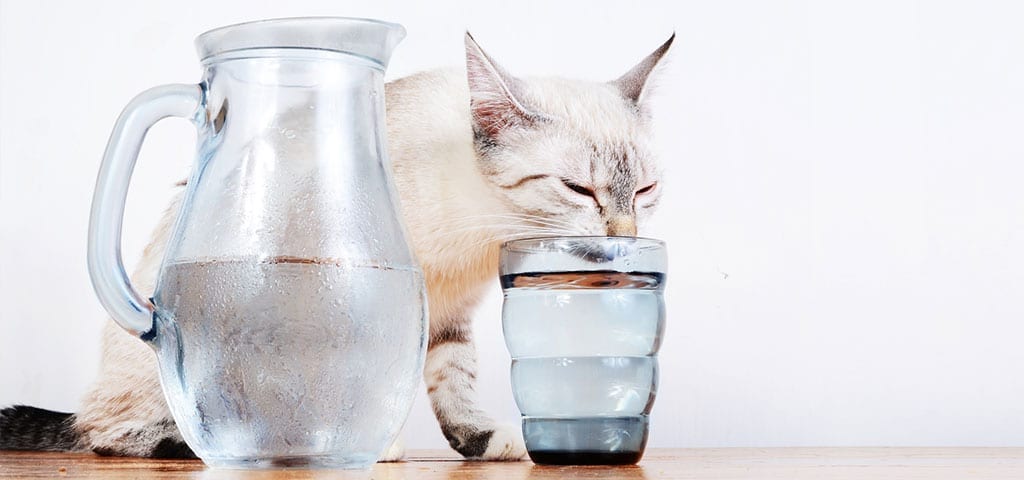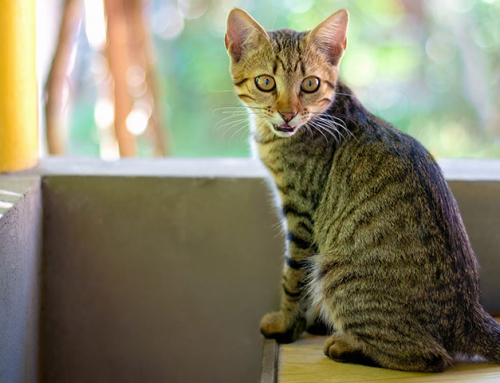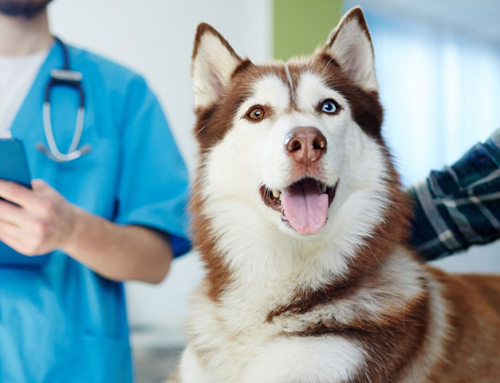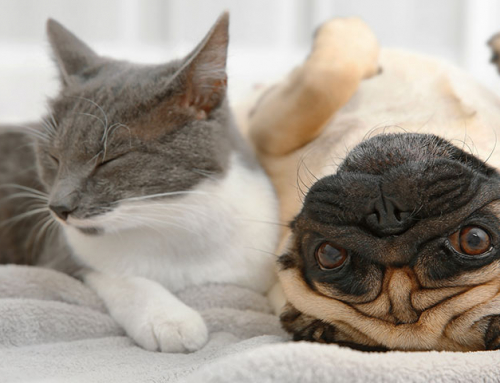Sometimes disease processes make it difficult for a pet to stay hydrated, even if a pet is drinking plenty. Those of you savvy about diabetes understand this all too well. If a pet’s blood glucose is so high that it prevents the kidneys from recapturing fluid after the kidneys filter the blood (that’s essentially what kidneys do to make urine), a pet can become dehydrated even when drinking large amounts of water. Kidney disease is another situation where it might be difficult for a patient to stay hydrated. Or if a pet has fluid losses such as from diarrhea or vomiting we might also need to help hydrate a pet.
What does it feel like to be dehydrated?
I’ve never been stuck on a dessert island nor deprived of water for extended periods of time, but I know what dehydration feels like. I’m as far from a party animal as they come, but despite my nerd-self, I have had a few times when I’ve had too many cocktails. The next morning’s hangover feeling is mostly due to dehydration. When we are dehydrated we feel puny. We aren’t as able to combat illness. Really, nothing works quite right when we are dehydrated.
So what are the hydration options to rehydrate a pet?
Oral: Oral hydration is the best option if there is no vomiting and the pet is just mildly dehydrated. If the gut works, use it! Really, Mother Nature intended us to imbibe our fluids. Our gi tract cells thrive with normal use and wither when not used.
IV: Unfortunately, if a pet gets behind the eight ball and becomes moderately to severely dehydrated, the quickest route to feeling better is IV fluids. This means setting an IV catheter (small soft plastic tube) into a vein and administering a balanced electrolyte solution right into the bloodstream. We can start with a quick fluid push, but then we need to slow down the fluid rate or else bad things can happen. Even when we are aggressively rehydrating a patient, we must reevaluate the fluid rate frequently. Sometimes we will spike the bag of IV fluids with additives such as potassium chloride.
I place sick pets on IV fluids all the time. This week one pet owner asked if she could administer the IV fluids at her home instead of leaving her sweetie at my clinic for the day. Honestly I think the human was more anxious about leaving her pet than the pet was anxious! Nonetheless, if I do have an anxious pet I’m not above giving a little versed to decrease anxiety… to the pet I mean! I told this pet owner that unless she had medical training it probably wasn’t a safe option. Besides, while monitoring a pet’s hydration while on fluids, we also have fluid pumps in clinics that regulate just how much fluid is administered each hour. We wouldn’t want to over hydrate a pet after all. Let me tell you, over hydration is no fun! I once had sinus surgery and I bled, so I was kept overnight in the hospital. I won’t name names but my overnight nursing care was more overnight neglect. They had me on so much fluid that my wrists were double their normal size the next morning. I was doped up on a morphine drip, and I peed the hospital bed overnight. Humbling moments! My point is, we need to monitor how a pet is doing while on IV fluids.
SQ: Sometimes vets use “SQ fluids” if time or finances don’t allow hospitalization on IV fluids or if a pet is just mildly dehydrated. To administer SQ fluids, we pick up the scruff and insert a needle into the subcutaneous space. We administer a balanced electrolyte solution under the skin. This is the same type of fluid that we usually administer intravenously, but give it under the skin instead. This fluid usually sinks under the armpit or to the ventral chest just by gravity. Usually within a day or so the lymphatic system will absorb the fluid. It’s not usually as good as IV fluids for hydration, but it’s still a feasible option!
You know I like hearing from our readers. Don’t hesitate to email me at [email protected]
NOTE: Consult your veterinarian first to make sure my recommendations fit your pets special health needs.







Thank you for this informative article. I had a lovely female Rat Terrier I rescued, not knowing how Ill she was with chronic kidney failure. I scoured the Internet, and tried everything I could to keep her feeling healthy, with a good quality of life. She made it for 3 years, and they were wonderful years for both of us. At the end, she stopped eating and drinking. I could not afford to keep taking her in for IV fluids, so the vet tried to teach me to administer the fluids subcutaneously, the method you described above. Unfortunately, the needle was extremely large, and poor Bella was very thin, so it cased her great pain, and it caused both of us to end up crying for an hour each time I did it. I took to giving her the fluid orally by squirting it into her mouth with an oral syringe, but sadly, it was not nearly enough.
My original dog, a 14 year old Rat Terrier named Winston, developed diabetes 3 years ago, as well as being diagnosed with Cushings disease. 5 times this past year, he suffered bouts of chronic pancreatitis, severe enough to be hospitalized for up to two weeks each time. He quickly became dehydrated each time. Winston’s wonderful Internal Medicine Doctor racked his brain, and came up with the following plan: I started adding 1/4 teaspoon of a pancreatic enzyme to each meal, along with an antioxidant supplemental vitamin. The last time Winston started showing signs of pancreatitis (vomiting and diarrhea), I started giving him Pedialyte orally, along with Purina Pro Plan Fortiflora, an incredible probiotic that stops diarrhea instantly. It did not develop into full blown pancreatitis, he did not get dehydrated, and he did not have to be hospitalized! Sorry for such a long post! Thank you again!